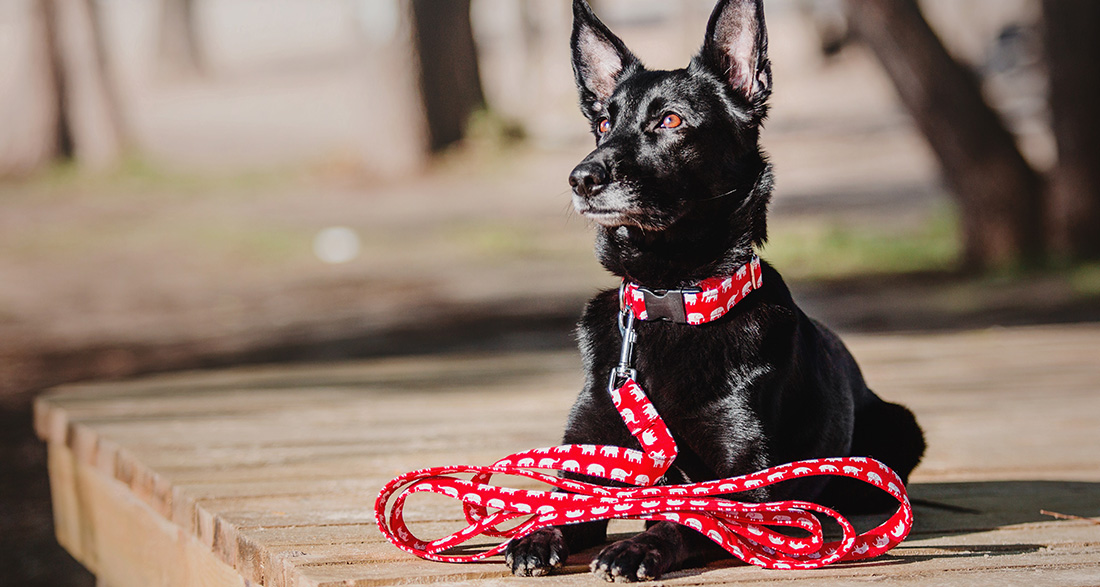Proper leash training with young dogs leads to quick success. The goal of the exercise is to eventually make the leash unnecessary. Through training with the long line or field leash, you teach your dog to stay close and recallable when off-leash. Read this guide to leash training and learn how to effectively use the long line in your training!
Leash Training for Beginners: Preparation and Selection of the Long Line
Leash training is suitable for:
- Dogs that are not recallable
- Dogs you don’t know yet
- Dogs with a prey drive
- Training of young dogs
- Exercise in areas where leash laws apply (public parks).
Especially for training young dogs who are no longer clinging to your leg but are discovering their stubborn adolescence, the long line is a good tool for dog training. With leash training, you can also counteract unwanted behavior. For adult dogs with a strong prey drive, leash training is, for example, the only reliable method to work on their recallability. First and foremost, you need a suitable dog harness and a sturdy, well-sized long line (also called a field leash). The rule of thumb is: the larger and stronger the dog, the shorter and sturdier the long line should be. When your hunting dog really takes off, you need to absorb the jerk and be able to hold the dog.
A long line is usually between five and 15 meters long. Longer lines quickly become unwieldy. However, keep in mind that a long line will often be in the dirt and dragged through mud. Therefore, it pays off to invest in a professional leash designed specifically for these training purposes. The leash should not be too heavy and hinder your dog unnecessarily. At the same time, it should not have loops or eyelets along its entire length, as undergrowth can easily get caught in them. The hooks on the harness should be sufficiently dimensioned and have a secure locking system.
Additionally, your dog needs a comfortable chest harness. This is very important because it will surely happen more than once that your dog jerks on the leash during training. Here, the harness must properly distribute the force without affecting the joints or the very sensitive neck of the dog. Therefore, the highest priority is: never attach the long line to a collar, which can cause serious injuries to your dog’s neck vertebrae!
Tie a stopper knot at the end of the leash to prevent the entire line from slipping through your hand. Especially with strong dogs that accelerate quickly, it is helpful to wear gloves to protect yourself from injuries. It is also advisable to wear sturdy footwear because your dog may often seek the wide open spaces through fields and forests. Stepping firmly on the leash is also an effective emergency stop.
Introducing Your Dog to the Long Line: The First Exercises
Before getting started, your dog needs to practice handling and walking with the long line. You must show him how to maneuver around obstacles to free his leash. Additionally, he must understand that the leash is not a toy to tug on or chew. If your dog starts to mess with the leash, clearly command “Leave it!” and prevent him from playing with it. However, reward him only when he walks calmly beside you. The leash serves as a link between you and your dog and should not be under tension. Encourage your dog to turn around and make eye contact with you. Use commands like “Look here!” and reward him when he looks up at you—even if it’s accidental—or offer him a game when he turns towards you.
Practicing Recall with the Long Line
The most crucial command your dog must master during off-leash activities is “Come!” During training, observe your dog closely and try to anticipate what he will do next. Is there an enticing bush, are other dogs or people approaching him, or is there a rustling sound in the underbrush?
Call your dog back before he can react to the distraction source himself. Then, reward him with a special treat or divert his attention with an alternative attraction. For example, throw a food dummy or his favorite toy in the opposite direction.
You can learn how to do this in the “Fetch” guide from iHugDogs.
Practice the recall command as often as possible. However, if your dog becomes fixated on something, even a recall command won’t help with untrained dogs. This is where the long line comes in: Direct him back to you with the line while enticing him with a reward. A step in long line training is to let the line drag on the ground without holding it. This way, you can pull the “emergency brake” at any time by stepping on the line. Additionally, a dog with a prey drive can quickly get tangled in the undergrowth with the long line, causing him to let go of the prey.
Continue reading about training for dogs with a prey drive in the iHugDogs guide “Anti-hunting training.”
Taking a walk in the forest with the long line is a good alternative to provide enough freedom of movement for a hunting, untrained dog while still keeping him under control. However, the goal of long line training is to condition the dog to come when called without leash control.


